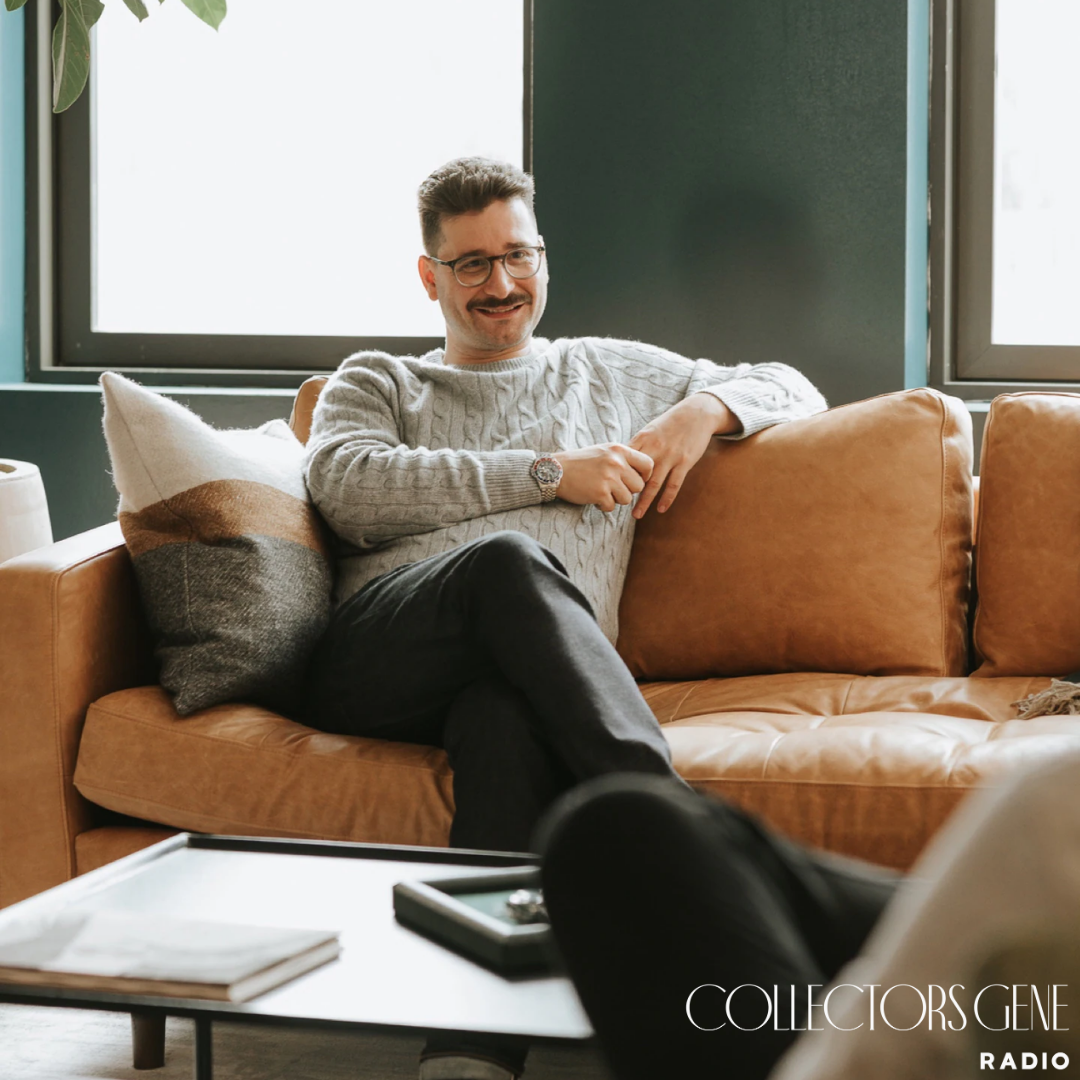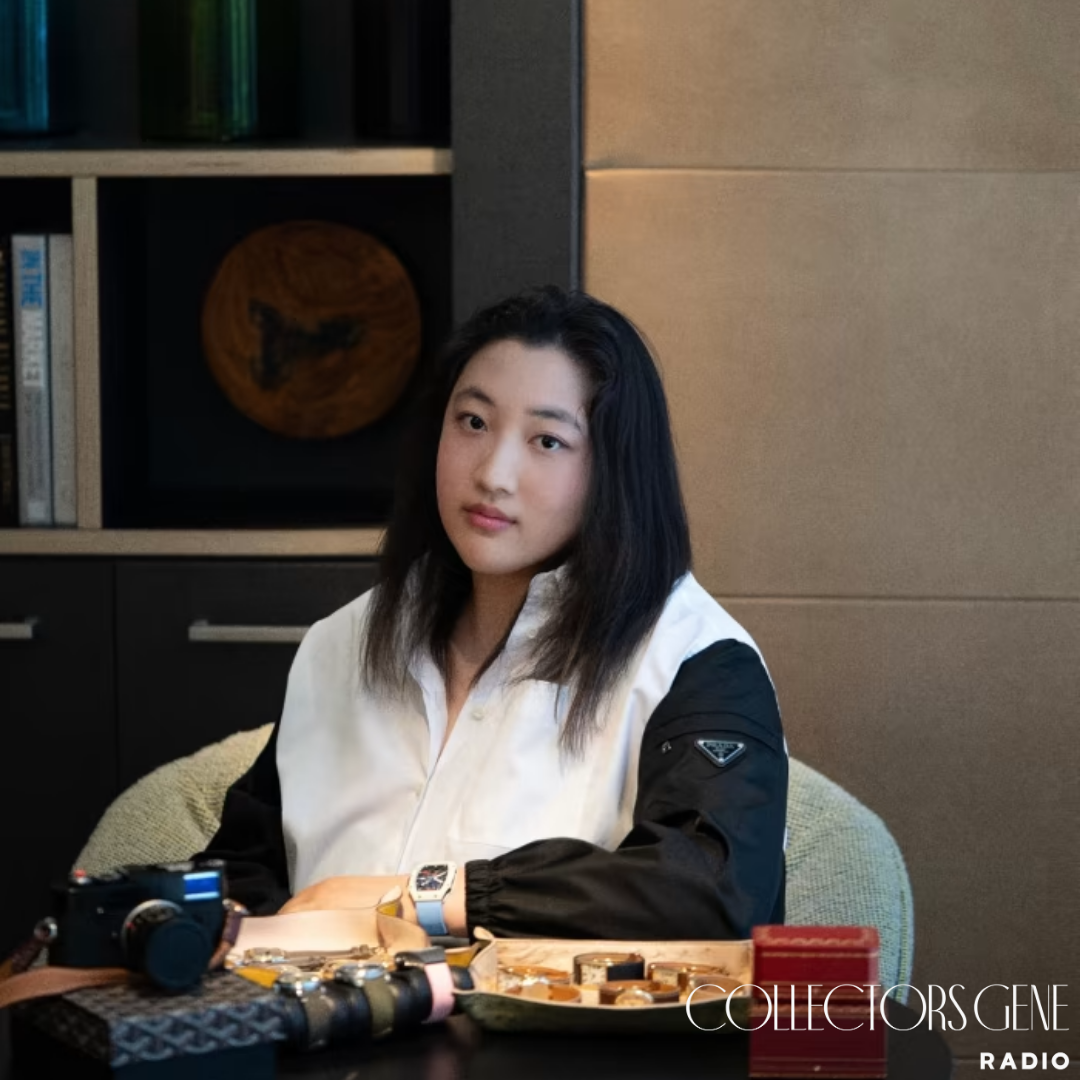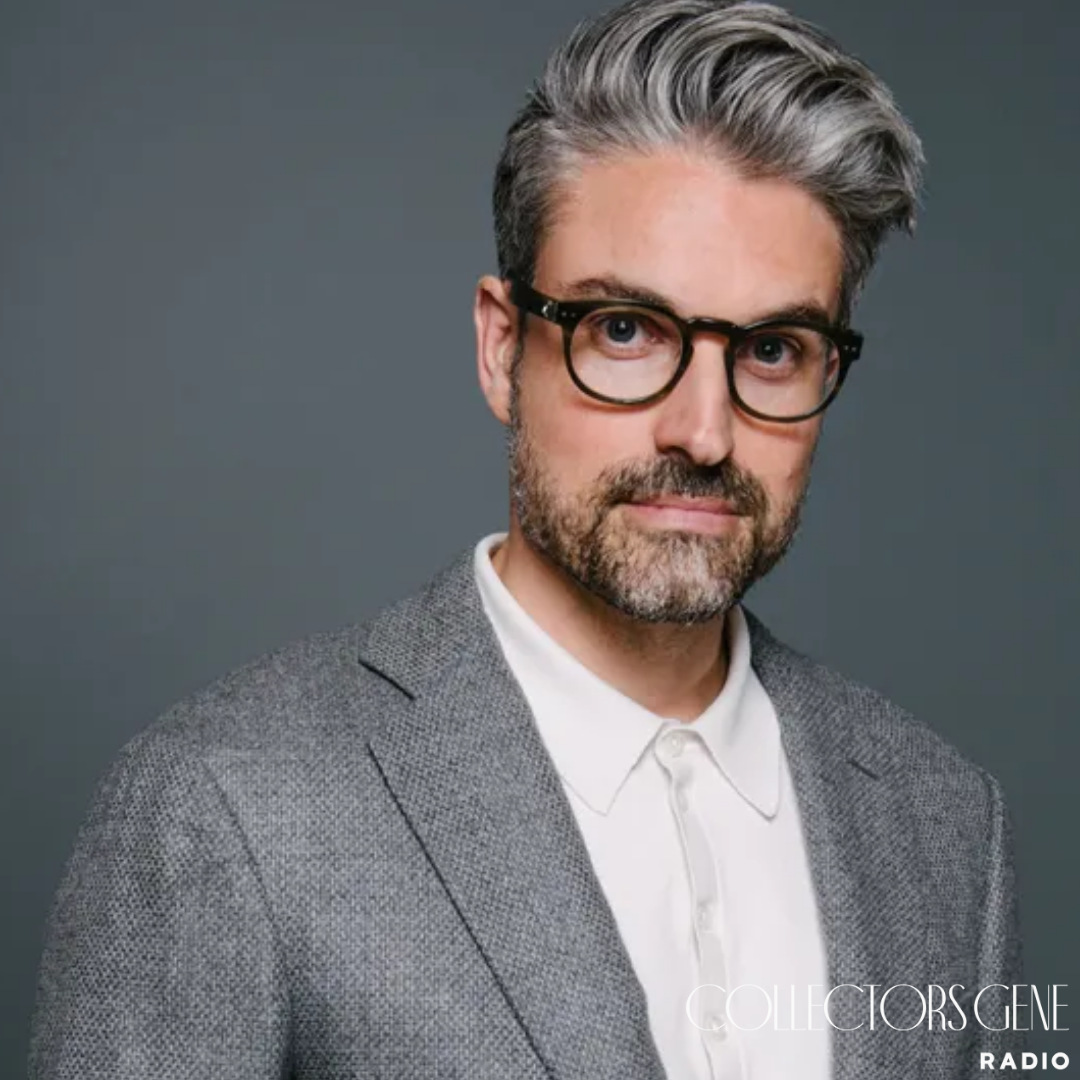There’s a certain electricity in a room when a watch is about to cross the block. I’ve felt it as a spectator, but Aurel Bacs lives in it every time he steps onto the rostrum. The whispers, the split-second glances, the way tension builds with each nod. It’s theater, but it’s also history in motion.
Sitting with Aurel, I realized quickly that while he’s associated with record-breaking numbers and headlines, his real fascination is with people: how they chase, how they calculate, how they decide when to leap. Auctions are just the stage. The story is always about the collectors themselves.
Passion, Means, and the Equation That Defines Collecting
Early in our conversation, Aurel framed collecting as a balance of three forces: passion, knowledge, and means. Miss one, and the equation breaks down. “If you wake up wanting an Impressionist painting but only have a thousand dollars, that dream isn’t going to work,” he said plainly. It sounds obvious, but it’s the kind of truth collectors forget when emotions run high.
At the same time, he’s quick to point out that money alone is never enough. The collectors who make an impact aren’t always the wealthiest; they’re the ones who bring deep scholarship to the table, who know why an engraving matters, or why a specific dial configuration can change a watch’s soul. That mix of intellect and obsession is what often outmaneuvers raw buying power.
Why Transparency Matters
Auction houses don’t all play the same game. Some still rely on opacity, hiding behind vague descriptions and blurred photos. Aurel doesn’t have patience for it. At Phillips, he’s pushed hard for transparency, sharp photography, detailed lot notes, even videos, not as a luxury but as a baseline.
“An auction house that doesn’t provide proper information is either lazy, ignorant, or both,” he told me. It’s blunt, but it explains why collectors trust him. Confidence in the description is what allows someone in Singapore or Los Angeles to bid sight unseen.
The Paul Newman Daytona and a Near Heart Attack
Of course, the story that hangs over Aurel is the 2017 Paul Newman Daytona auction. I asked him about it knowing he’s told it a hundred times, but even so, his voice carried the memory like it was yesterday.
The room was buzzing with celebrities and billionaires, but also with uncertainty. When Aurel opened bidding at $1 million, the very first phone bid jumped straight to $10 million. “I thought I was going to have a heart attack,” he admitted. The room erupted, and history was made. The watch hammered at $15.5 million, a figure that instantly became legend.
What struck me wasn’t just the number. It was the presence of Newman’s family in the room, watching his personal watch change hands. That human layer of grief, memory, pride, is something no spreadsheet can capture. It’s why auctions, at their best, are more than transactions. They’re collective rituals.
What Defines a Collector
Aurel doesn’t define collectors by the size of their safe or the neatness of their theme. For him, the through-line is emotional. One person might have a Patek, an Omega, and a Richard Mille with no common thread except joy. Another might obsess over every sub-reference of a Speedmaster. Both are valid. What matters is that they’ve hunted, sacrificed, and attached meaning to the pursuit.
That definition felt familiar to me, a progression from what Matt Hranek said about the hunt being more powerful than ownership. Aurel adds another layer: the way an object slots into a personal narrative, even if it looks incoherent from the outside.
Vintage vs. Modern: Two Different Languages
The old debate of vintage versus modern came up, and Aurel refused to draw a hard line. Vintage carries romance: hand-finished bevels, patina that feels earned, the thrill of knowing you’re just one in a short lineage of owners. Modern, on the other hand, is about practicality and presence. Watches you can wear daily without worry, that still carry design pedigree.
He mentioned the Bulgari Octo, which to him represents modern design courage, borrowing Genta’s sensibility but evolving it into something fresh. It was a reminder that collecting isn’t binary. You can speak both languages at once.
Lessons From Regret
Like any collector, Aurel has his ghosts. One story he shared stuck with me: an early Omega Seamaster he bought at a flea market as a teenager. A wealthy bidder came along with cash in hand, and Aurel let it go. Decades later, he still feels the sting.
It’s a universal truth in collecting. Missed pieces linger longer than the ones you overpaid for. The watches we sell too quickly become the ones we replay in our minds. Regret is part of the education.
Where He Sees Value
When I asked about today’s market, Aurel pointed to places most casual observers overlook: Zenith El Primeros, IWC Ingenieurs of the 1950s and 60s, Omega Constellations and Seamasters from the mid-century. To him, these watches carry real design pedigree at prices still within reach.
It’s advice that echoes something I’ve noticed across episodes: collectors who’ve been at it longest often steer away from what’s hot. They look sideways, into corners of the market where beauty hasn’t yet been fully recognized.
The Collectors Gene Rundown
The One That Got Away: That early Seamaster with its black honeycomb dial still haunts him. Proof that money made too quickly is never as valuable as the right watch held close.
The On Deck Circle: Undervalued pieces like a Zenith, vintage IWC, mid-century Omega. Watches that carry history without requiring headlines.
The Unobtainable: The Patek Philippe Museum’s treasures. Both inspiring and maddening, because their beauty is forever out of reach.
The Page One Re-Write: Maybe multiples of pieces he sold too soon. A Paul Newman Daytona or two wouldn’t hurt.
The GOAT: John Goldberger. Not because of trophies, but because of his curiosity, his generosity, and his refusal to collect for hype.
The Hunt or the Ownership: For Aurel, the flirtation is the best part. The chase, the tension, the “will I or won’t I” moments stay etched in memory long after the watch is boxed.
Do You Feel You Were Born With the Collector’s Gene?: Yes. His family instilled the rhythm early. Flea markets, auctions, antique stalls. The obsession wasn’t learned; it was absorbed.
Closing Reflection
Leaving the conversation with Aurel, I wasn’t thinking about prices or headlines. I was thinking about presence. The way a room can fall silent when a watch with a story crosses the block. The way regret can outlast even the biggest win. And the way collectors, whether they buy at flea markets or from Phillips, are all shaped by the same balance of passion, scholarship, and means.
If Matt Hranek showed me that collecting is about training the eye, Aurel reminded me that it’s also about knowing when to act and when to let go. Together, those lessons build into the kind of collecting life that’s richer than any single piece.





